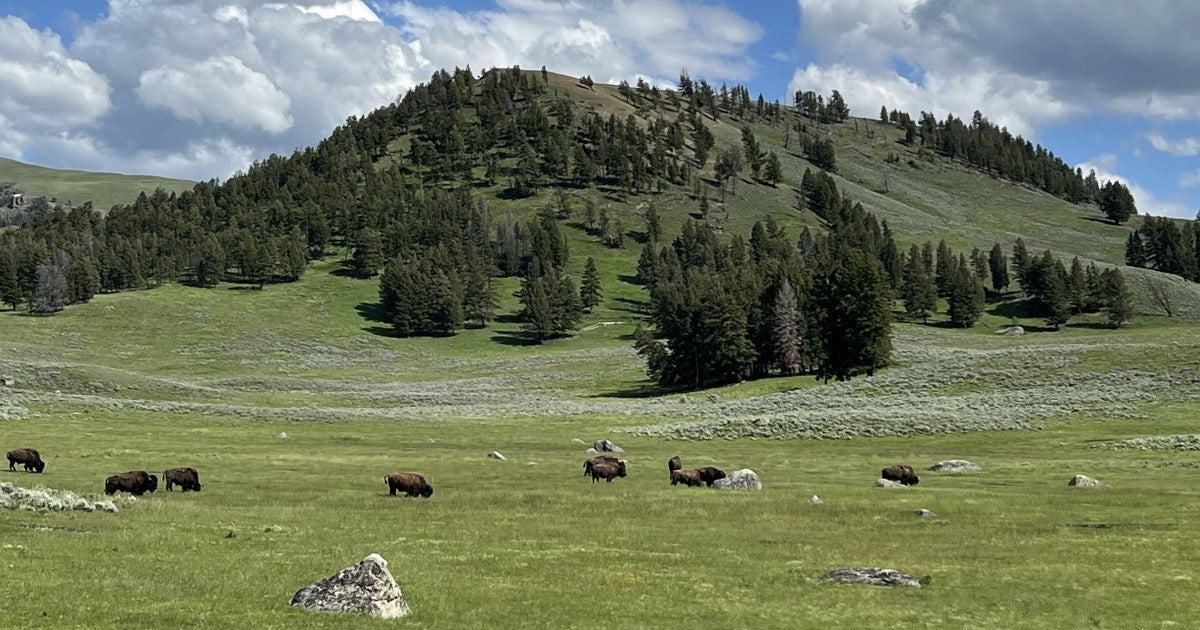Your Cart is Empty
free shipping over $60 - we ship in 1-2 biz days
free shipping over $60 - we ship in 1-2 biz days
Add description, images, menus and links to your mega menu
A column with no settings can be used as a spacer
Link to your collections, sales and even external links
Add up to five columns
Add description, images, menus and links to your mega menu
A column with no settings can be used as a spacer
Link to your collections, sales and even external links
Add up to five columns

Yellowstone National Park: A Journey Through Time
by Zoe Coulcher March 15, 2024 2 min read
Introduction
Yellowstone National Park, nestled in the heart of the Rocky Mountains, is a land of geysers, hot springs, and breathtaking vistas. But beyond its natural wonders lies a rich tapestry of human history that spans thousands of years. Let's delve into the captivating story of this iconic park.
Precontact Era: Ancient Footprints
The human history of Yellowstone extends back more than 11,000 years. Evidence from archeological sites, ancient trails, and oral histories reveals that Native American tribes inhabited this region long before European settlers arrived. The Tukudika, also known as the Sheep Eaters, are perhaps the most well-known group to have used the park. However, many other tribes and bands lived in and traversed what we now call Yellowstone National Park.
European Exploration: Fur Traders and Expeditions
In the late 1700s, fur traders ventured along the Yellowstone River, seeking trade with Native American communities. The first organized expedition to explore Yellowstone took place in 1870, led by the Washburn-Langford-Doane party. Their awe-inspiring accounts of geysers, boiling mud pots, and towering waterfalls captured the world's imagination.
Birth of a National Treasure: Yellowstone Becomes a Park
On March 1, 1872, Yellowstone National Park was established as the world's first national park. This groundbreaking decision marked a turning point in conservation history. The park's pristine wilderness, teeming with wildlife and geological wonders, became a sanctuary for generations to come.
The Railroad Era: Easier Access and Park Management
In 1883, the arrival of the Northern Pacific Railroad made Yellowstone more accessible to visitors. The US Army managed the park from 1886 to 1918, ensuring its protection and overseeing early infrastructure development. In 1915, automobiles were allowed into the park, making visits easier and more economical.
The National Park Service Era: A New Stewardship
The creation of the National Park Service in 1916 marked a pivotal moment. Yellowstone's management evolved, guided by reports like the influential "Leopold Report" in 1963, which recommended changes to wildlife management. The elimination of open-pit garbage dumps in the park's bear management plan in 1970 was another milestone. The "Summer of Fire" in 1988 tested the park's resilience, while the reintroduction of wolves in 1995 restored a vital ecological balance.
Preserving the Past, Shaping the Future
Today, every corner of Yellowstone holds a story. From the earliest humans who followed environmental changes over millennia to the tribes with deep connections to its resources, the park's history is etched in its landscapes. As stewards, we strive to protect both its natural and cultural heritage, ensuring that future generations can marvel at the same wonders that have captivated us for centuries.
Yellowstone National Park stands as a testament to the enduring relationship between humanity and the wild. Its past whispers through the rustling pines, and its future awaits discovery in the steam rising from its geysers. As you explore its trails and gaze upon its geothermal marvels, remember that you walk in the footsteps of those who came before—a legacy of wonder, awe, and reverence for this extraordinary place.
Leave a comment
Comments will be approved before showing up.
Subscribe
Sign up to get the latest on sales, new releases and more …
